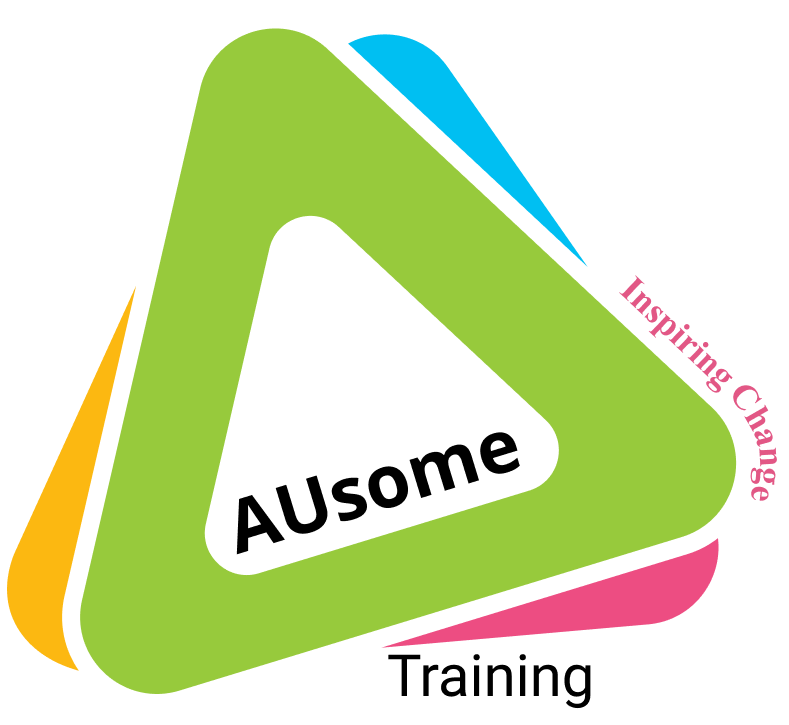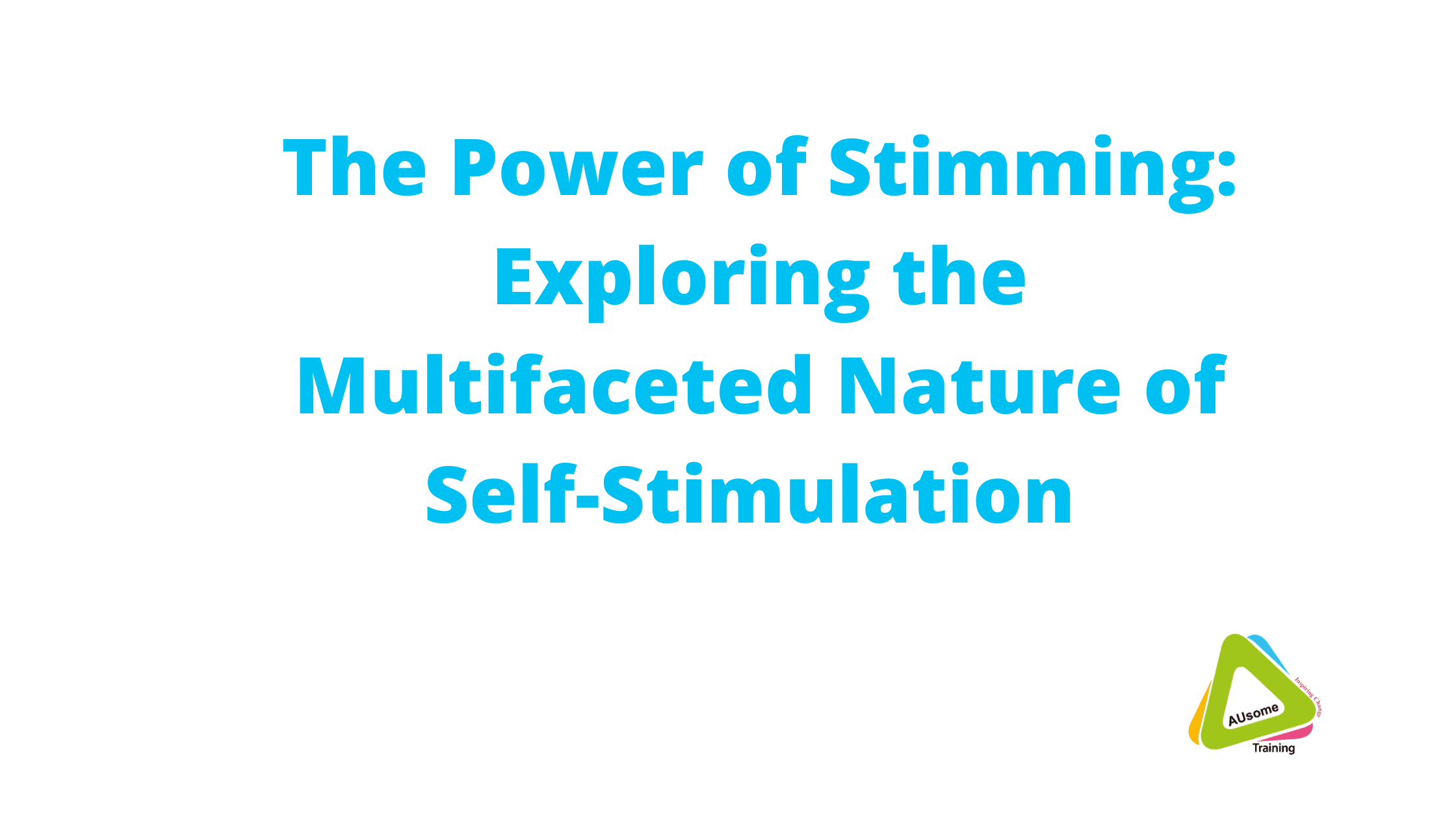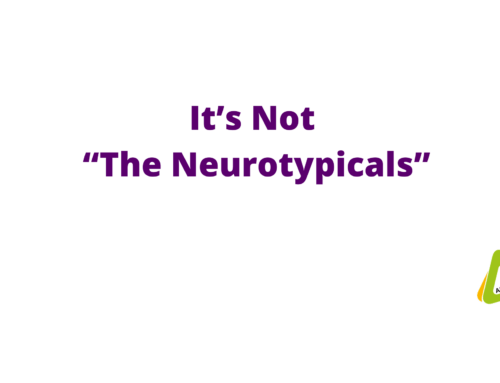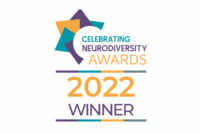Let’s explore the power of stimming and the biological process that underpin this complex human behaviour. Stimming, short for self-stimulation, is a fascinating aspect of human behaviour that has often been misunderstood or overlooked. In this blog, we delve deeper into the world of stimming and uncover its profound connections to various systems within the human body, including the somatosensory system, limbic system, and the often-overlooked vagus nerve. By understanding these connections, we can gain a greater appreciation for the purpose and significance of stimming as a natural and beneficial human behavior.
The power of Stimming: The Role of the Somatosensory System
The somatosensory system, responsible for processing sensory information from our body, plays a crucial role in stimming. When individuals engage in stimming behaviors like hand movements, pacing, or repetitive actions, they activate the somatosensory pathways. These behaviours provide a sensory input that helps individuals regulate their emotions, filter sensory information, and enhance their learning process. Stimming becomes a means to connect the body and mind, facilitating self-regulation and promoting a sense of comfort and security. Now that’s one power of stimming, let’s look further…
Unveiling the Limbic System
The limbic system, known as the emotional center of the brain, is intimately intertwined with stimming. Stimming behaviors can trigger responses within the limbic system, leading to emotional regulation and memory consolidation. When the somatosensory experiences associated with stimming activate the limbic system, individuals may experience a sense of calm, reduce stress and anxiety, and improve their overall emotional well-being. The limbic system’s involvement highlights how stimming can be an innate mechanism for emotional self-care and regulation.
The Remarkable Vagus Nerve:
One often underappreciated aspect of stimming is its connection to the vagus nerve, a cranial nerve that extends throughout the body. The vagus nerve influences both physiological and emotional responses, and its stimulation can profoundly impact stimming experiences. Stimming behaviors that activate the vagus nerve, such as deep breathing, rhythmic movements, or sensory engagement, promote relaxation, regulate heart rate, and reduce stress and anxiety. The vagus nerve’s extensive connections with the limbic system also enhance emotional regulation, memory formation, and contribute to the positive emotional experiences associated with stimming. Additionally, the vagus nerve’s connections to the somatosensory system facilitate sensory input and further amplify the effects of stimming, providing comfort and regulation.
Communication and the Vagus Nerve:
The vagus nerve’s influence extends to the realm of communication as well. It contributes to the regulation of vocalization, facial expressions, and social engagement. For individuals who may face challenges in conventional communication, stimming behaviors can serve as alternative means of self-expression and communication. Vocal stims, facial movements, or other forms of stimming can be influenced by the vagus nerve’s impact on communication pathways. Recognizing stimming as a valid form of communication empowers individuals and fosters understanding and acceptance.
Autonomic Expression
Stimming behaviors can also impact the autonomic nervous system, which regulates automatic bodily functions such as heart rate, digestion, and breathing. Engaging in stimming activities like rhythmic movements, deep breathing, or sensory engagement can activate the autonomic nervous system in a way that promotes relaxation, reduces stress, and enhances overall well-being.
For example, certain stimming behaviors, such as rocking or swaying, can have a calming effect by activating the parasympathetic branch of the autonomic nervous system. This activation leads to a state of rest and relaxation, promoting a sense of tranquility and balance. On the other hand, more energetic stimming behaviors, like jumping or bouncing, can engage the sympathetic branch of the autonomic nervous system, resulting in increased energy and alertness.
Understanding the connection between stimming and autonomic expression highlights the holistic nature of stimming and its impact on various bodily systems. It demonstrates how stimming can serve as a powerful tool for self-regulation, promoting emotional well-being and physiological balance.
Incorporating this aspect into our understanding of stimming allows us to appreciate its role in promoting overall harmony within the body and mind. By recognizing the influence of autonomic expression, we gain a deeper understanding of how stimming can contribute to individuals’ self-care and well-being.
In conclusion, stimming is a multifaceted phenomenon that involves the somatosensory system, limbic system, vagus nerve, and autonomic expression. By acknowledging these connections, we can better comprehend the significance and positive impact of stimming on emotional regulation, sensory integration, communication, and overall well-being. Embracing and supporting stimming as a natural and valuable aspect of human neurodiversity is essential for fostering inclusive and accepting communities. Let us celebrate the power of stimming and promote an environment that embraces diverse expressions of self.
Below are three examples of how all of these systems interplay:
Example 1: Admiring a view
Imagine standing on a serene mountaintop, gazing at a breathtaking view of nature’s grandeur. As you soak in the beauty before you, you notice a profound sense of calm washing over you. This experience of tranquility can be attributed to the interplay of various physiological and neurological processes.
Firstly, the somatosensory system comes into play as your eyes capture the vivid colors, the intricate details, and the expansive landscape. The visual input stimulates the sensory receptors in your eyes, sending signals to the brain. The somatosensory cortex receives these signals, allowing you to perceive and process the visual information. This activation of the somatosensory system contributes to the sensory experience of taking in the view.
Simultaneously, the limbic system, which plays a vital role in emotions and emotional regulation, responds to the awe-inspiring sight. The amygdala, a key component of the limbic system, processes emotional responses and helps regulate their intensity. In this case, the sight of the beautiful view triggers a positive emotional response, eliciting feelings of peace, serenity, and joy. The limbic system, including the amygdala, works in harmony with other brain regions, such as the hippocampus, to integrate the emotional experience and form memories associated with the view.
Furthermore, the vagus nerve, a crucial component of the autonomic nervous system, becomes active during this serene moment. The vagus nerve is a major pathway through which the brain communicates with the body, influencing various bodily functions and regulating the autonomic response. As you immerse yourself in the view, experiencing a sense of tranquility, the vagus nerve engages the parasympathetic branch of the autonomic nervous system. This activation promotes a state of relaxation and lowers stress levels, leading to a slower heart rate, deeper breathing, and a general sense of calm. The vagus nerve acts as a bridge between the mind and body, facilitating a harmonious state of well-being during this scenic experience.
Through the interplay of the somatosensory system, limbic system, vagus nerve, and autonomic expression, the act of looking at a lovely view becomes an immersive and transformative experience. The visual stimuli activate the somatosensory system, while the limbic system responds with positive emotions and the formation of lasting memories. Simultaneously, the vagus nerve orchestrates the autonomic response, promoting relaxation and an overall sense of well-being.
Example 2: Clicking your fingers to recall information
Imagine you’re trying to recall a specific piece of information that seems to be at the tip of your tongue but just out of reach. In an attempt to jog your memory, you instinctively snap your fingers. This seemingly simple physical action actually involves a complex interplay of various physiological and neurological processes.
As you click your fingers, the somatosensory system comes into play. The tactile sensation of your fingers colliding triggers sensory receptors in your skin, sending signals to your brain. The somatosensory cortex receives these signals, allowing you to perceive and process the tactile feedback. This physical stimulation of the somatosensory system creates a sensory connection between the action of clicking your fingers and the neural pathways associated with memory retrieval.
Simultaneously, the limbic system, which plays a crucial role in memory formation and emotional processing, becomes engaged. The act of clicking your fingers activates the limbic system, including the hippocampus, which is involved in memory consolidation. This activation stimulates the formation of associations between the physical action and the neural networks responsible for memory recall. The emotional significance attached to the action, such as the anticipation of remembering, further reinforces the neural connections within the limbic system.
Additionally, the vagus nerve, a key component of the autonomic nervous system, plays a role in this process. The vagus nerve serves as a communication channel between the brain and various organs in the body. As you click your fingers, the vagus nerve transmits signals that initiate a cascade of responses within the autonomic nervous system. This activation can trigger a subtle shift in the autonomic expression, promoting a state of heightened focus and cognitive readiness for memory retrieval.
Through the interplay of the somatosensory system, limbic system, vagus nerve, and autonomic expression, the act of clicking your fingers serves as a multi-faceted mechanism for memory recall. The somatosensory stimulation creates a sensory connection, while the limbic system facilitates the formation of memory associations. Simultaneously, the vagus nerve and the autonomic response contribute to a state of cognitive readiness and focused attention, enhancing the potential for successful recall.
Example 3: Stimming for relaxation
Imagine you’re feeling stressed and overwhelmed after a long day. Seeking a sense of calm and relaxation, you decide to engage in a familiar self-soothing activity: running your fingers through a bowl of smooth, cool stones. As you let the stones gently glide through your fingers, a cascade of physiological and neurological responses occurs.
The somatosensory system comes alive as the stones make contact with your fingertips. The tactile sensations generated by the smooth texture and cool temperature of the stones activate sensory receptors in your skin. These receptors send signals to the somatosensory cortex, where the sensations are processed and integrated. The somatosensory experience provides a sensory focus and directs your attention away from stressful thoughts and towards the present moment.
Simultaneously, the limbic system, which is involved in emotional processing, becomes engaged. As you interact with the stones, the limbic system perceives the calming sensation and interprets it as a signal of safety and relaxation. This activates the release of neurotransmitters and hormones associated with positive emotions, such as serotonin and endorphins. The activation of the limbic system reinforces the connection between the somatosensory experience and the emotional response, promoting a sense of tranquility and well-being.
The vagus nerve, a vital component of the autonomic nervous system, also plays a role in this process. As you engage in the soothing activity, the vagus nerve transmits signals between the brain and various organs in your body. This communication triggers a series of physiological responses that facilitate relaxation, such as a decrease in heart rate and blood pressure, and an increase in digestive activity. These responses are part of the parasympathetic branch of the autonomic nervous system, often referred to as the “rest and digest” response. The vagus nerve’s involvement in the relaxation response further enhances the overall calming effect of the somatosensory experience.
By running your fingers through the stones, you engage in a holistic experience that integrates the somatosensory system, limbic system, vagus nerve, and autonomic expression. The tactile sensations provide a grounding and sensory-focused experience, while the limbic system interprets the activity as soothing, releasing neurotransmitters associated with relaxation. The involvement of the vagus nerve facilitates a state of calmness by initiating a cascade of physiological responses that promote relaxation and well-being.
This example demonstrates the intricate connection between physical sensations, emotional processing, and physiological responses. Engaging in self-soothing activities like this can serve as a powerful tool for managing stress and promoting a sense of calmness. By understanding the underlying mechanisms at play, we can better appreciate the therapeutic benefits of stimming and sensory experiences in promoting emotional well-being and self-regulation.
Understanding the intricate involvement of these interconnected systems in our everyday experiences sheds light on the complex nature of human cognition and memory. It highlights the profound ways in which our physical actions, emotions, and physiological responses intertwine to support cognitive processes. By recognizing the significance of these interactions, we can gain a deeper appreciation for the role stimming plays in our cognitive abilities and the unique ways in which we access and retrieve information. We also deepen our appreciation for the role stimming plays in our lives and the importance of supporting individuals in their unique expressions of self.
If you’re a professional working with Autistic children or adults and would like to learn more like this then check out our CDP courses so that you can become part of our network of neuro-affirming, compassionate professionals who are leading the way in Neurodivergent client care.




